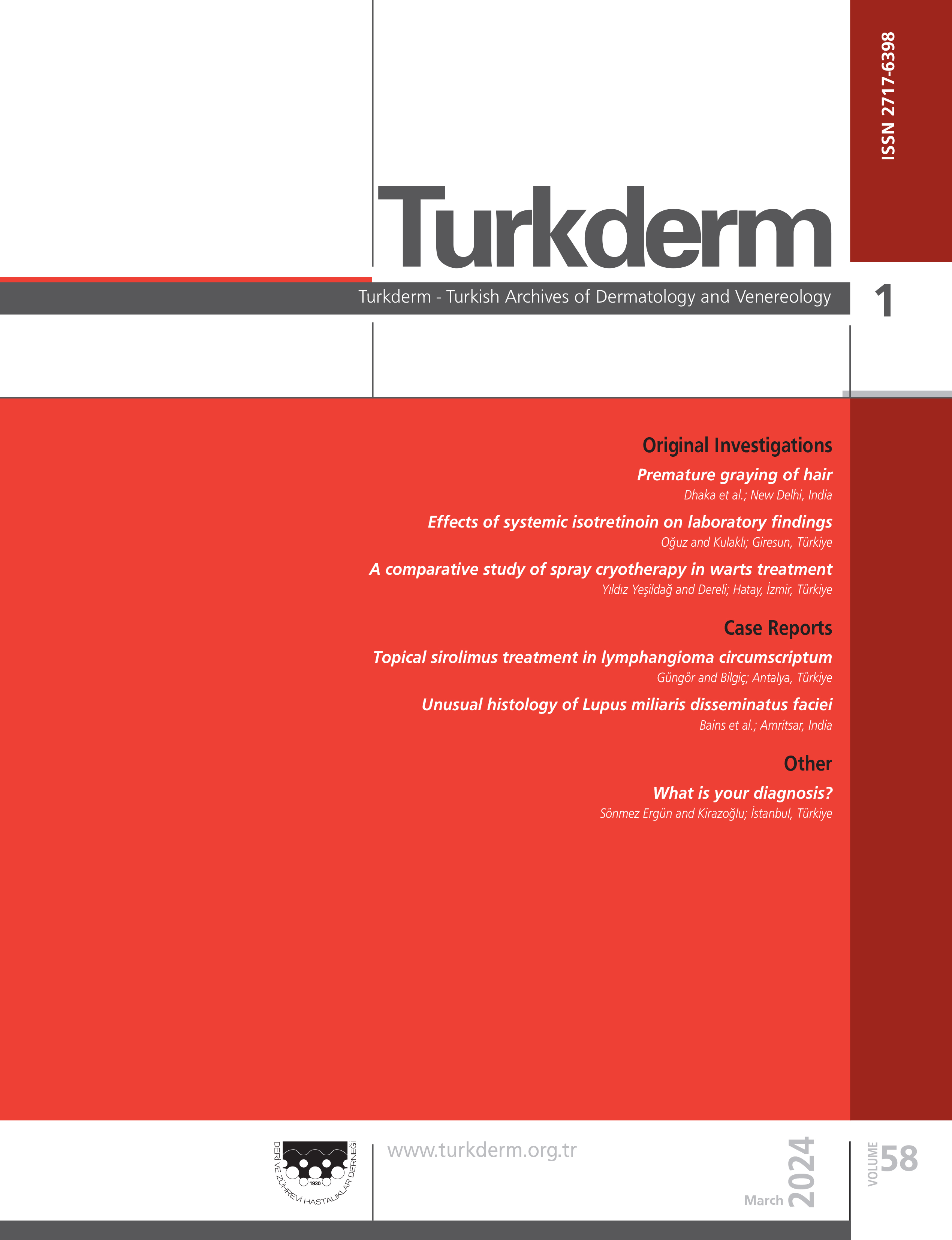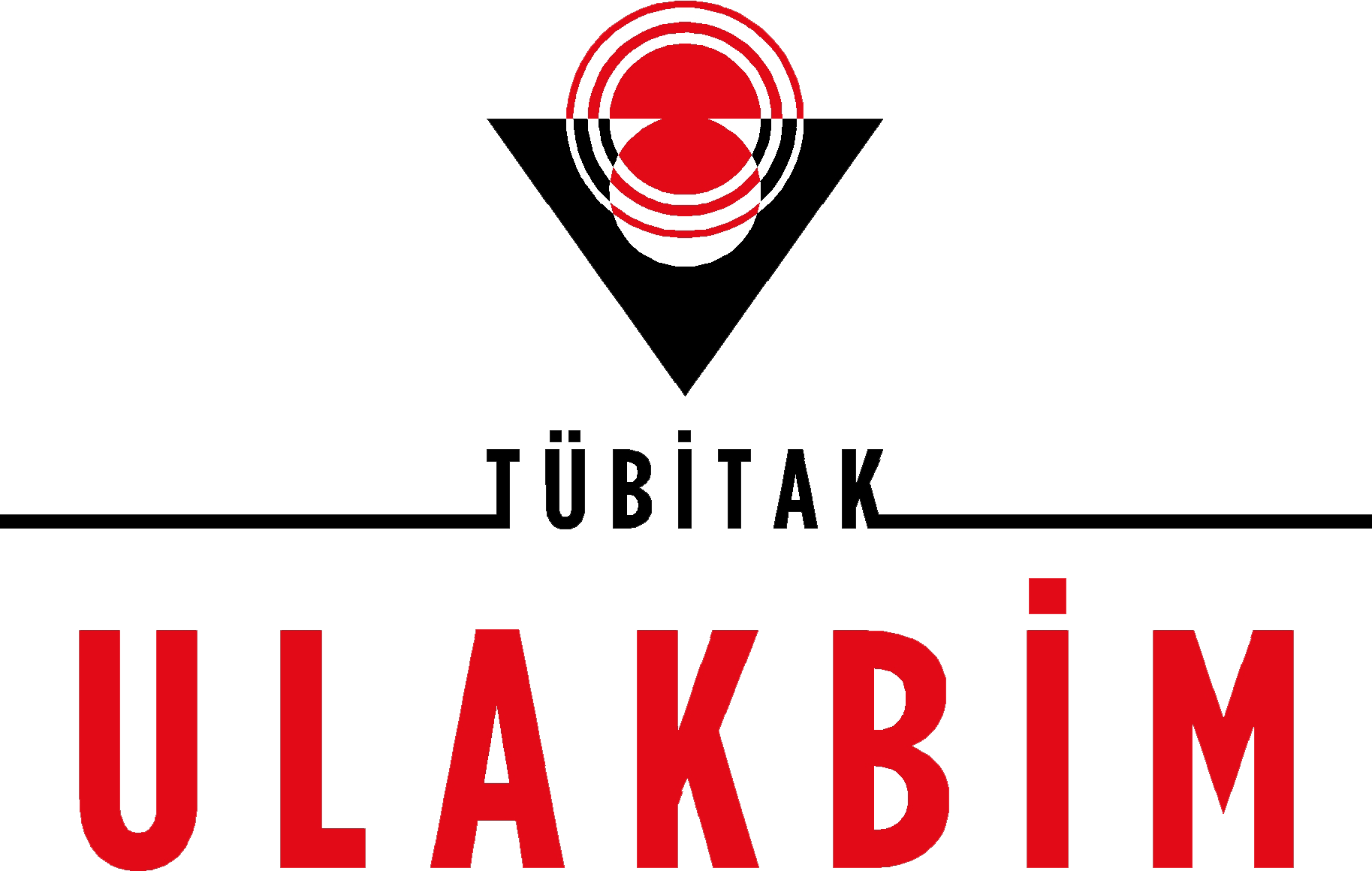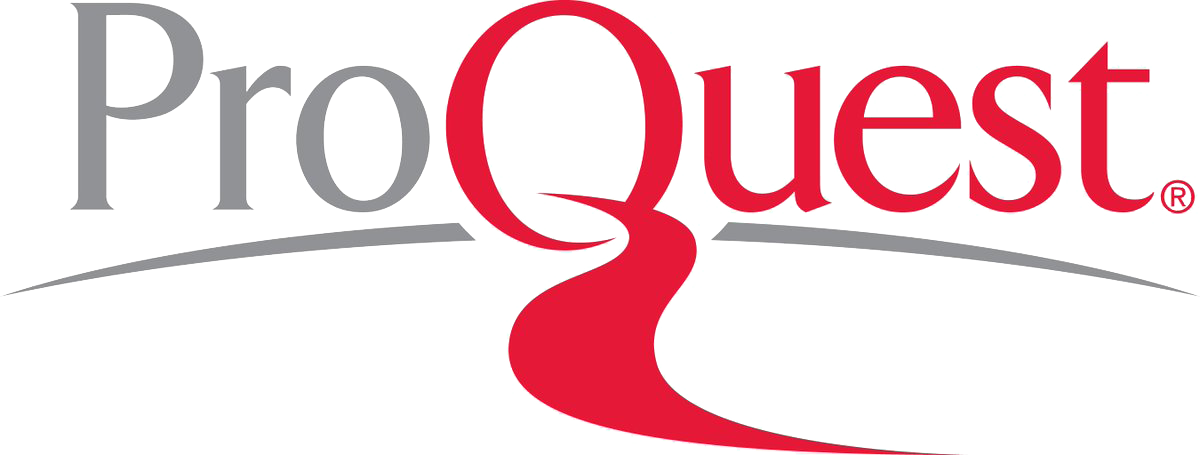Impact of intense pulse light on quality of life in patients with erythematotelangiectatic rosacea
Mehdi Iskandarli, İlgen Ertam, İdil ÜnalEge University Faculty of Medicine, Department of Dermatology, İzmir, TurkeyBackground and Design: It has been shown that acne rosacea (AR) seriously affects quality of life (QoL). Various options are available for the treatment of AR. There are many studies in the literature demonstrating that QoL of patients have improved after these treatments. Positive outcomes have been attained with intense pulsed light (IPL) in the treatment of AR and erythematotelangiectatic rosacea (ETR) in particular. However, although there are studies in the literature showing the effectiveness of IPL in ETR, no studies have been conducted at either international or national level showing to what extent it has positive impact on QoL.
Materials and Methods: Our goal in this study was to reveal to what extent IPL affects QoL positively. To this end, 30 patients who were diagnosed with ETR and met the inclusion criteria were included in the study. In this open-label, prospective, uncontrolled cohort study, visual analog scale (VAS), Physicians Global Assessment (PGA), Dermatology Life Quality Index (DLQI) and 36-Item Short Form Health Survey (SF-36) were administered before and after the IPL therapy, which was planned to be administered to the patients once in four weeks in a total of three sessions.
Results: The data collected before the first session and after the last session were evaluated with the SPSS statistics software and statistically significant p values were obtained. The difference in VAS score between before and after treatment was -3.13±1.46 (p<0.01), -1.6±0.6 in PGA (p<0.01), and -11.63±3.13 in DLQI (p<0.01). The SF-36 was assessed in 8 subscales; physical functioning (PF), role-physical (RP), social functioning (SF), role-emotional (RE), bodily pain (BP), vitality (VT), mental health (MH), and general health (GH). The statistical analysis of the SF-36 showed that the difference was 35±16.24 in SF (p<0.01), 61±20 in RE (p<0.01), 8±16.9 in VT (p<0.05), 38±11.03 in MH (p<0.01), and 47.03±12.74 in GH (p<0.01). A comparison of the data obtained during the first and last visits revealed that there was a decrease of 3.13 points in VAS, 1.6 points in PGA, and 11.63 points in DLQI. Statistically significant improvements were found in the scores of SF, RE, VT, MH, and GH subscales of the SF-36.
Conclusion: The results of this study revealed that IPL was an effective method in the treatment of ETR. Marked reductions were seen in the clinical symptoms after the IPL therapy as evidenced by the VAS and PGA scores. Patient satisfaction was also evidenced by the DLQI and SF-36.
Eritematöz telenjiektazik rozasede yoğun atımlı ışık tedavisinin yaşam kalitesine etkisi
Mehdi Iskandarli, İlgen Ertam, İdil ÜnalEge Universitesi Tıp Fakültesi, Deri ve Zührevi Hastalıkları Ana Bilim Dalı, İzmirAmaç: Yapılan çalışmalar göstermiştir ki, akne rozase (AR) hastalığı yaşam kalitesini (YK) ciddi bir şekilde etkilemektedir. AR tedavisinde farklı seçenekleri mevcuttur. Bu tedaviler sonrası hastaların YKde iyileşme saptandığına dair literatürde birçok çalışma mevcuttur. Yoğun atılımlı ışıkla [intense pulse light (IPL)] ARnin özellikle eritematöz telenjiektazik rozasenin (ETR) tedavisinde olumlu sonuçlar elde edilmiştir. Fakat, literatürde IPLnin ETRde etkinliğini gösteren çalışmalar olsa da, YKyi ne kadar olumlu etkilediğine dair çalışmalar ne uluslararası, ne de ulusal düzeyde yapılmıştır.
Gereç ve Yöntem: Bu çalışmada amacımız IPLnin YKyi ne kadar olumlu etkilediğini belirlemektir. Bu amaçla, çalışamaya ETR tanısı almış ve alınma kriterlerini karşılayan 30 hasta dahil edilmiştir. Açık-kontrolsüz, prospektif ve kohort bir çalışmada 4 haftada bir olmakla toplam 3 seans IPL tedavisi planlanan hastalara, hem IPL öncesi, hem de IPL tedavisi bitiminden sonra vizüel analog skalası (VAS), Doktor Global Değerlendirme Skalası (DGDS), Dermatolojik Yaşam Kalitesi İndeksi (DYKİ) formu ve Kısa Form-36 (KF-36) ölçeklerinin doldurulması planlandı.
Bulgular: İlk seansta ve son seanstaki elde edilen veriler SPSS programı ile değerlendirilmiştir ve istatistiksel anlamlı p değerleri elde edilmiştir. VAS farkı -3,13±1,46 (p<0,01), DGDS farkı -1,6±0,6 (p<0,01), DYKİ farkı ise -11,63±3,13 (p<0,01) olmuştur. KF-36 formu ise 8 bölümde: Fiziksel fonksiyonellik (FF), fiziksel rol kısıtlılığı (FRK), sosyal fonksiyonellik (SF), duygusal rol (DR), bedensel ağrı, canlılık (CA), genel ruh sağlığı (GRS) ve genel sağlık (GS) incelenmiştir. KF-36 formunun istatiksel değerlendirilmesi zamanı, SF farkı 35±16,24 (p<0,01), DR farkı 61±20 (p<0,01), CA farkı 8±16,9 (p<0,05), GRS farkı 38±11,03 (p<0,01), GS farkı ise 47,03±12,74 (p<0,01) olmuştur. İlk ve son vizitlerdeki elde edilen verileri karşılaştırdığımız zaman, VASta 3,13, DGDSde 1,6, DYKİde ise 11,63 birim gerileme görülmüştür. KF-36 formunun SF, DR, CA, GRS ve GS bölümlerinde istatiksel anlamlı iyileşme saptanmıştır.
Sonuç: Bu çalışmanın sonucunda, IPLnin ETR tedavisinde etkin bir yöntem olduğu saptanmıştır.VAS ve DGDS ölçekleri ile IPL tedavisi sonrası klinik belirtilerde belirgin gerileme görülmüştür. Aynı zamanda hasta memnuniyeti, DYKİ ve KF-36 formları ile ortaya konulmuştur.
Corresponding Author: Mehdi Iskandarli, Türkiye
Manuscript Language: Turkish






















